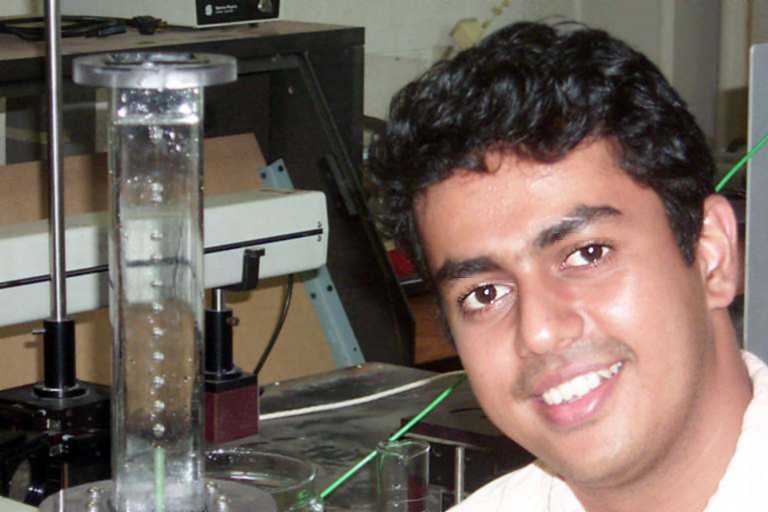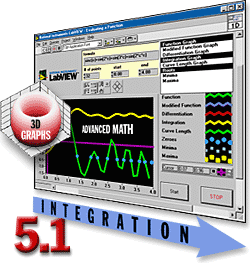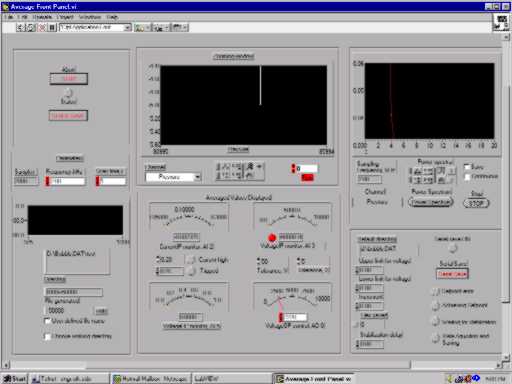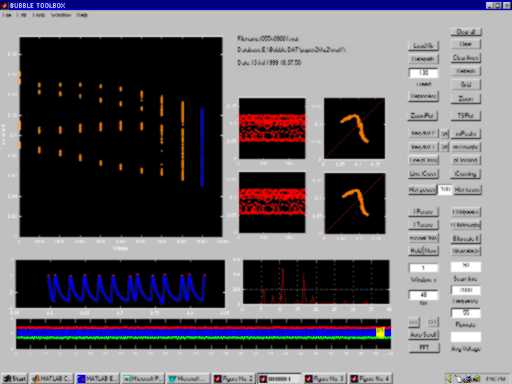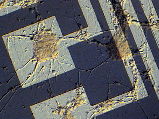
In all chaos there is a cosmos, in all disorder a secret order Effervescence and bubbling have always been thought of as one of the simple phenomena, which make life interesting to look at. But beneath this innocuous visage lies a system so complex that the last decade has produced a flurry of papers investigating the interplay of bubbles. From numerical modeling of bubbles to studying the effect of sounds of bubble formation, numerous research thrusts have been made to try and capture this phenomenon in its entirety. Control of bubbles is one such aspect. Several attempts have been made to control bubbles, to tame them from a spectrum of sizes to a single file of pearls. But till date no successful attempts have been reported not only because of the spatio-temporal behavior, but also the sensitivity of the bubbling experiments to external noise. Yet it is the same simplicity of the experimental arrangements with bubbling experiments, which have made chaotic analysis through bubbles a favorite. It is certainly easier to study chaos in a bubble column than to simulate it in earthquakes! This research was carried out with two objectives:
These were two disjoint research directions. The first involved understanding the bubbling from the fluid mechanics point of view and studying the dynamics associated with the system. Once the system was quantified in terms of bubbling regimes and dimensionless numbers, the next step was to integrate the system information with control equations and set-up a schemes to implement the control. The latter phase of implementing the control algorithm was the most challenging. And it is this phase, where previous experience had showed, maximum investment was to be made. Data acquisition and automation techniques were employed to generate large volumes of data for study. For the characterization studies of the bubble system, data analysis tools were built for data mining from the experimental data sets. Development of data analysis tools spurred study of statistical techniques like principal component analysis and wavelets to the bubbling data. Finally, to employ the control algorithm, real time computing modules were built for online analytical processing and simultaneous control. All of the software tools built for this experiment were in conjunction with Oak Ridge National Laboratory (ORNL) and are available through ORNL for evaluation. The reader is encouraged to contact the Duane D. Bruns research group at the University of Tennessee, Knoxville or David DePaoli at ORNL for an evaluation copy of the BUBBLE Toolbox for Chaotic Analysis© (Sarnobat, 2000) and the BUBBLE Automation Workbench© (Sarnobat, 2000) along with sample data for research purposes. This research project has been documented in three parts, one as a part of this Master's thesis, a second as research papers submitted at the University of Tennessee, Knoxville and third as software releases through Oak Ridge National Laboratory.
In the present thesis, the first chapter gives an introduction to the overall project. The second chapter updates the reader with concepts from research in bubbles and chaos control. The third chapter describes the experimental and data analysis techniques used. The fourth chapter presents the results and analysis from the identification of the bubbling system. The fifth chapter has results from the attempt to control chaos by using a well-known control algorithm. The sixth and final chapter details the conclusions and recommendations. |

My Masters thesis is titled,
"Real
time regime identification and non-linear control of chaotic bubbles under
the influence of electrostatic fields". We have identified
electrostatic fields as an additional bifurcation variable and this gives
a whole dimension to the control of chaotic bubbling (which has not been
successfully reported, as yet). We shall be attempting a control strategy,
which involves multi-variate control using both flow and voltage as the
two variables. The results thus far have proved to be extremely promising.
If successful, this will prove to be a landmark paper in the field of chaos
and potentially could be published in a science journal instead of engineering.
If done the conventional way, this project was extremely time-consuming. Each run took approximately 14 days to complete, and then data analysis took another 2 weeks. LabView was used to automate the entire experimental set-up and reduced the duration of each run to 4 days. Now in the same time period, more runs could be carried out, which meant huge volumes of data. Using MATLAB and data compression techniques, automated routines were generated to preprocess and compress data from each run by a factor of 4, reducing the file size from about 0.8GB to just 140 MB.. .
With enormous amounts of data on hand, efficient data analysis tools were required to analyze each data set. Those were created in MATLAB using the GUI utility extensively to create a toolbox for chaotic and non-linear time series analysis. This included file-handling capabilities and used a database to store all the required runs in a systematic orderly manner. Without the toolbox, several aspects of the data, which could only be observed with large sets of data, would have been lost to study. The data visualization tools often provided the Aha! needed for further research. This got my first publication out in just 1-½ months after the experiment was started. This also has gotten me interested in OLAP and database management. Finally, a primer to the bubble toolbox
is out. Click here..
To further improve the efficiency
of my experimental results, a real time method was needed to identify the
regime of the bubbling. This was where MSPC came in. I took a course in
advanced monitoring and diagnostic techniques in the summer ’99. Using
the data analysis techniques used in that course, a regression model was
developed. Non-linear PLS with neural networks was found to be the most
successful method. But the models’ success deteriorated as the regime went
from period one into chaos, i.e. as the non-linearity increased. Also,
the generalization properties were poor. This prompted research into neural
network models.
Because of only one measured variable, time embedding of the time series by delaying the signal was done for extracting information about other system variables. PCA carried out and this was then fed to a neural network, which identified the periodicity of bubbling. This neural network model allows the operator to know the exact time when the fault, (change in bubbling periodicity occurs). Now, we can explore every regime to its exact limits and establish the critical boundaries that will be needed for designing a controller for controlling chaos. At the same time, a self-adapting neural network was developed based on a Kohonen map. The highlight of this was that the model was self-learning and can be placed online with one clean training data set. It would then pick up any new patterns in the bubbling and remember them for future occurences. Though this started with
the aim of improving efficiency for the experimental runs, this has now
taken the form of a paper, which will soon be ready for publication.
Presently I am trying to tame chaotic bubbling processes with different control strategies. If successful, you can bet on my research team joining the whos' who list in chaotic circles! (No pun intended!!). Jokes apart, success in this experiment will warrant a paper in a scientific journal instead of an engineering journal!
Currently I am exploring
avenues on fuzzy logic, pattern recognition and
data
mining. Coupled with this I am also trying to market myself to
potential employers. So if you happen to know of somebody who wants to
hire a dynamic, enthusiastic and dedicated engineer, please click
here.
If you are looking for someone like me, all the better!
|
